This entry includes a walking tour! Take the tour.
Introduction
Text-to-speech Audio
Covering 160 acres, this historic Kansas city cemetery was incorporated in 1888 and has grown to include both the historic Forest Hill Cemetery and Calvary Cemetery. It is located near the University of Missouri - Kansas City and the historic battlefield of Westport. The cemetery includes the final resting places of Kansas City residents from the Civil War to the present, from Confederate officers to innovative businesswomen and civil rights leaders. It was designed by notable Kansas City architect George Kessler and landscape designer Sid Hare.
Images
Forest Hill Cemetery entrance
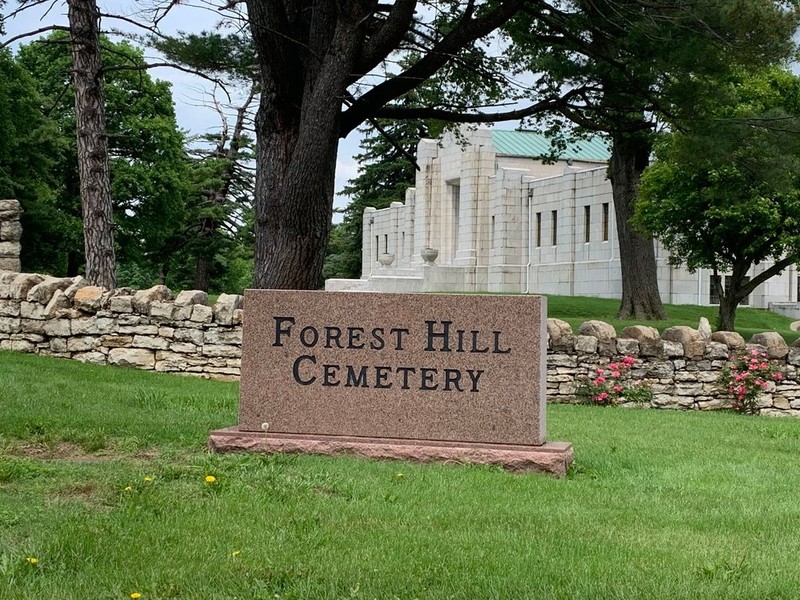
Postcard of Forest Hill Cemetery, 1908
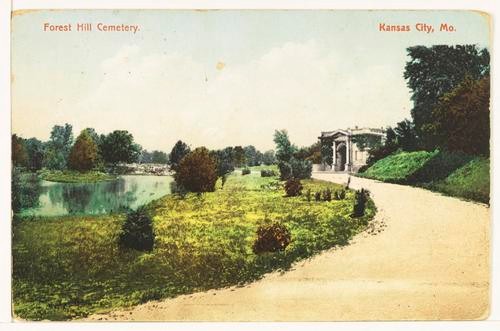
George E. Kessler
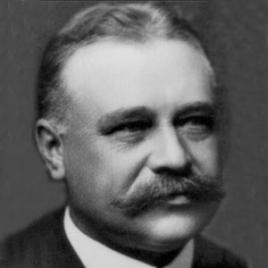
Sidney Hare
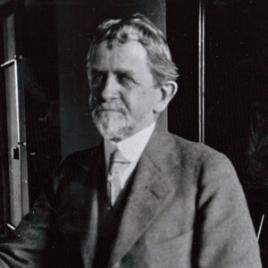
The Confederate Memorial at Forest Hill and Calvary Cemetery.
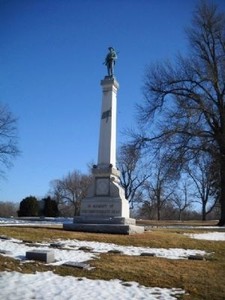
Backstory and Context
Text-to-speech Audio
George Kessler was well-known for his work around Kansas City. Born in Germany in 1862, Kessler first came to America at age 16. He returned to Germany to study botany, forestry, and design before moving back to New York in 1882. His first projects in the United States included the Railroad Excursion Park in Merriam, Kansas and Hyde Park in Kansas City. He is remembered for his work on Kansas City’s park and boulevard system. Six years after arriving back in the United States, Kessler designed Forest Hill Cemetery.
The cemetery originally had 104 species of domestic and foreign trees, the result of Sid Hare’s vision for what cemeteries could be. Sid Hare was the cemetery’s first superintendent. He worked with George Kessler at the Kansas City engineer’s office. When he became superintendent of Forest Hill Cemetery in 1896, Hare began developing theories on cemetery design. He believed that while cemeteries were a resting place for the dead, they could also be a botanical garden for the living. Hare went on to develop a landscape design firm with his son called Hare & Hare. The father son team worked with J.C. Nichols in developing Kansas City neighborhoods like the Country Club Plaza and Mission Hills. They designed fifty-four total cemeteries in the United States and one in Costa Rica.
Forest Hill Cemetery became Forest Hill and Calvary Cemetery after seventy bodies of Confederate soldiers were interred there. On October 22-23rd, 1864, General Sterling Price’s raid on Missouri ended in a bloody battle resulting in 1,500 soldiers killed, captured, and wounded. The Battle of Westport was the last Confederate military operation west of the Mississippi. In 1866, a local man named George W. Briant decided he would give the soldiers of this battle, who had been buried where they died, a proper burial if they would be removed from their current burial spots. He then deeded a fraction of his land to Byrum’s Ford Internment Association. The bodies were slowly moved from the battlefield of Westport to unmarked graves in a small cemetery on the southeast corner of modern-day Troost and Gregory Boulevard. One notable internment was that of Confederate Colonel Upton Hayes, who died at Newtonia, Missouri in 1862 and was re-interred at the request of his family.
In 1890, the small cemetery was threatened by widening roads in Kansas City. The Kansas City Star suggested the bodies be moved to Forest Hill Cemetery, across the street. Between 1893 and 1894, about seventy bodies were moved from the small cemetery to Forest Hill. Throughout the decade, the Daughters of the Confederacy advocated for a Confederate memorial in Forest Hill to honor the unknown men. On Memorial Day, 1902, the memorial was erected during a ceremony attended by thousands of people, including Confederate veterans.
Sources
History, Forest Hill Calvary Cemetery. Accessed February 26th, 2023. https://www.fhccemetery.com/history.
Euston, Diane. Civil War History Marked in Stone at Local Cemetery, Martin City Telegraph. Accessed February 26th, 2023. https://martincitytelegraph.com/2019/02/11/civil-war-history-marked-in-stone-at-local-cemetery/.
George E. Kessler, The Cultural Landscape Foundation. Accessed February 26th, 2023. https://www.tclf.org/pioneer/george-kessler.
Sidney Hare, The Cultural Landscape Foundation. Accessed February 26th, 2023. https://www.tclf.org/pioneer/sidney-hare.
Kansas City Public Library
The Cultural Landscape Foundation
The Cultural Landscape Foundation
Historical Marker Database
